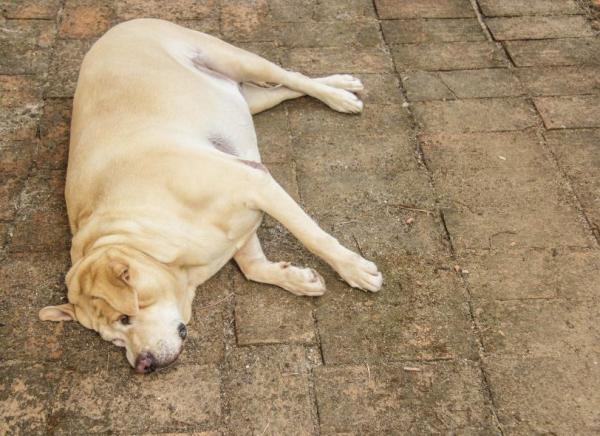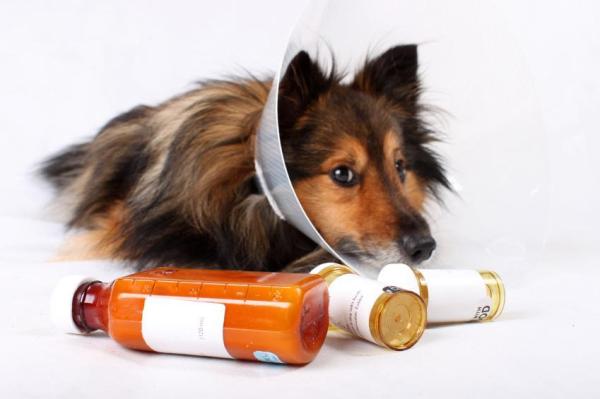Hypothyroidism in Dogs - Symptoms and Treatment



See files for Dogs
Hypothyroidism is a syndrome caused by thyroid malfunction and the consequent reduction in the production and release of thyroid hormones. This disease is the most common hormonal imbalance in dogs. It causes very varied and unspecific symptoms, but the good thing is that it can be easily treated and is not a chronic disease.
In this AnimalWised article we will tell you all about the symptoms, causes and factors, diagnosis, treatment and prevention of hypothyroidism in dogs.
Symptoms of hypothyroidism
The symptoms of hypothyroidism in dogs are varied and unspecific, because the disease affects all organs. Reduction of cellular metabolism has an impact on the dog's mood as well as on different bodily systems.
Besides the dog's general state of health, the most common symptoms of this disease are manifested on a neuromuscular, dermatological, cardiovascular, reproductive and ocular level. The following are common symptoms of hypothyroidism in dogs, but bear in mind that the disease can cause other symptoms.
- General Symptoms:
- Lethargy
- Intolerance to exercise
- Weight gain without eating more food
- High cholesterol.
- Neuromuscular symptoms:
- Facial paralysis and/or nodding of the head
- General weakness
- Balance disorders
- Incoordination (ataxia)
- Weakness in the legs on one side of the body (hemiparesis)
- Dermatological Symptoms:
- Dry or oily seborrhea
- Symmetrical hair loss (alopecia): This usually originates asymmetrically, located around the back and the tail, but as the disease progresses it adopts a bilateral symmetrical pattern. In some dogs, alopecia can only occur in the legs.
- Swollen and spongy skin (myxedema) which forms folds, especially on the head
- Dull, dry, rough and brittle hair
- Pustules on the skin (pyoderma) as a secondary consequence
- Cardiovascular symptoms:
- Slow heart rate (bradycardia)
- Irregular heartbeat (arrhythmia)
- Anemia
- Reproductive Symptoms:
- Infertility
- Abortion
- Testicular atrophy
- Ocular symptoms:
- Opacities in the eye (corneal lipidosis)

Causes and risk factors
Canine hypothyroidism is almost always primary in character. If so, it's caused by lymphocytic thyroiditis or idiopathic thyroid atrophy:
- Lymphocytic thyroiditis occurs when the dog's own immune system attacks the thyroid glands, damaging or destroying them.
- Idiopathic thyroid atrophy is a degenerative problem in which the gland tissue is gradually replaced by adipose tissue.
In the few cases of secondary canine hypothyroidism, it is caused by traumas or tumors in the pituitary gland, prolonged use of glucocorticoids and/or a lack of iodine in the diet.
Although dogs of any age can suffer from hypothyroidism, the disease is most common in dogs between one and eight years old. The breed is not a decisive factor, since all dogs can suffer from the disease, but it is more common among:
- Golden Retrievers
- Labrador Retrievers
- Boxer dogs
- Dachshunds
- Great Danes
- Irish Setters
- Schnauzers
How is hypothyroidism diagnosed?
Using the symptoms as a foundation, the vet will ask for an analysis of the thyroid hormones if it suspects the dog is suffering from hypothyroidism. The aim of these tests is to detect the blood concentration of the thyroxine hormone, also known as Free T4. The most commonly used test for this is called "equilibrium dialysis".
If the results show normal levels of the T4 hormone, hypothyroidism is ruled out. However, a low concentration of T4 does not necessarily mean that the dog is suffering from the disease.
To confirm the presence of hypothyroidism, it is necessary to perform a second test called a "TSH test". If the results of the second test show low levels of the T4 hormone, hypothyroidism is officially diagnosed.

Treatment of hypothyroidism in dogs
Treatment for this disease is quite simple, and it consists of administering the dog with daily doses of levothyroxine sodium, which is a synthetic form of the Free T4 hormone. Since levothyroxine comes in tablets, it is very easy to administer along with food. The daily dosage should be specified by the vet.
An improvement in the dog's mood and activity levels is usually seen after a week's treatment. Improvements in the dermatological problems are usually noted after a month or a bit more. It may take longer to improve other related complications.
Dogs with hypothyroidism should have regular check-ups with the vet in order to adjust the dosage to the animal's requirements. These check-ups are more frequent at the beginning and become less necessary as the hormonal concentration stabilizes.
This is a lifelong treatment, but it is easy to follow and it notably improves the quality of life of the dogs who receive it. Even though hypothyroidism causes damage to many organs and systems, the prognosis of treatment is very good to excellent.

Can hypothyroidism be prevented?
There is no way to prevent this disease, but the correct diagnosis and proper treatment allows the dogs and their humans to lead a normal life.

This article is purely informative. AnimalWised does not have the authority to prescribe any veterinary treatment or create a diagnosis. We invite you to take your pet to the veterinarian if they are suffering from any condition or pain.
If you want to read similar articles to Hypothyroidism in Dogs - Symptoms and Treatment, we recommend you visit our Other health problems category.









